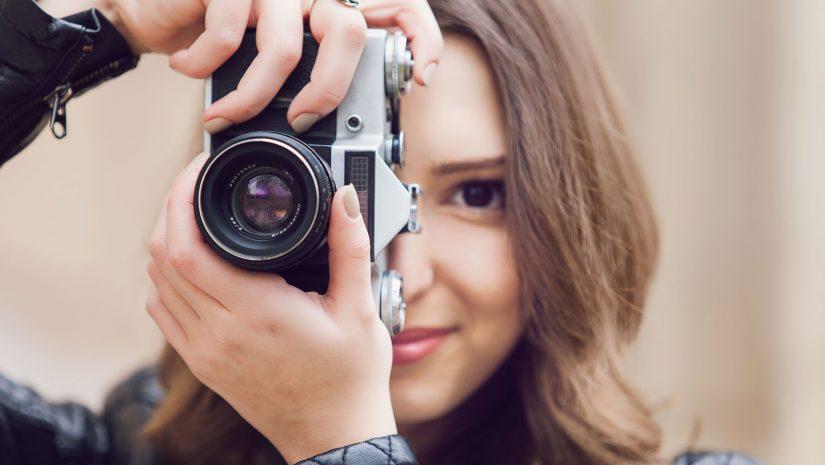
Whether you do that through painting on a rice grain or captivating photography, we reside in a society where stories are essential for complementing what we are working on.
Currently, writing is more powerful than ever before: each day, we write, read, send, post, like, share, dislike, and enjoy a steady flow of the written text. What's more, from pitches to captions, or even from press releases to artist statements, modern photography is currently expressed more in text than the adage 'a picture is worth a thousand words.' Therefore, learning and understanding how to present your work in writing is now an essential skill.
So how then can you write about your photographs? Well, this article will take you through a distinct list of things that you can do to help you write authentic and quality content about your photographs with ease.
Let’s get started.
1. Who Is It For, Anyway? (Target Audience):
Whether you are writing a grant application or a project statement, you must define what you want to write about and who you are doing it for. Ideally, a text must be written with an objective and a target audience who will gain from it.
If you write a poetic, flowery text to accompany your writing project for political photos, for instance, and you want to sell the pictures to a magazine or newspaper, this will not work.
While there isn't inherently bad or good writing, like there is no bad or good photography, your writing has to be purposed for something and useful to someone.
2. Align your writing with your photos
When writing content about your photographs, your form of writing must follow the style of your work. While this is obvious, it is surprising how many individuals don't adhere to this. If your photos are a series of poetic images, for instance, your photo story should be about them.
Typically, the interaction between photography and writing is tricky. Why? As a first, people seem to trust words more compared to images. What’s more, people are quick to spot a mismatch between what they see and read. Therefore, when it comes to writing about photography, ensure there is no mismatch whatsoever.
People are quick to spot a mismatch, and although you can try to conceal it with quotes or art speak, they are not dumb-they will spot that you are trying to hide something.
3. Write Around them, not about them
A great way to write a fantastic read about your photography is to ensure that you write around them rather than about them. What this means is that you need to produce content that conveys very similar ideas compared to your photos, although in other ways. You may add a few things that cannot be expressed in pictures. Ideally, you need to add your personality into your writing. The idea is to show your audience a somewhat different angle from which they may approach your work.
If you take time to observe how many established photographers present their pieces, you will note that many of these professionals talk around their photography, rather than about them. Many photographers hesitate to talk about their photos since it takes all the magic away!
In essence, you will need to be somewhat of a 'magician,' whose trickery largely relies on shifting the attention of the viewers elsewhere. Since photography is quite descriptive, numerous photographers experience difficulties in doing that. However, this is where you can discover the art of photography.
4. Do You!

In your writing, it is crucial to demonstrate to your audience that you care about your work. However, while this is essential, avoid being a phony. Don’t use marketing antics. Similarly, don’t be tempted to adjust your writing to appeal to as many individuals as you can. You are not in the product marketing business.
The truth is that you cannot please everyone, and not everyone will like or care about your photos. Therefore, don't let this bother you. Instead, your writing should please you first! If you accomplish this well, you will appeal to the individuals who relate to your pictures.
In simple terms, just as it is when you are taking pictures, you need to start by trusting yourself first, and then have faith that your writing and photographs will communicate to the appropriate audience.
5. Get opinions about your job
Finally, it would help if you always got honest opinions from several individuals about your project, whether it is your writing or photography. However, you must refrain from using family members or loved ones when seeking for honest reviews unless you are confident that they will be sincere. Similarly, avoid individuals who simply cannot be critical.
Get honest reviews and feedback from individuals whose opinions you respect, trust, and appreciate, and implement them into your writing.
Conclusion:
While writing may appear like a rather daunting task-which is to some extent true since it mandates thought and skill, consider that it is an integral part of how you present your work. Don't cut down or short cut your efforts. Simply remember that, although producing visual media may please you, if your work is purposed for public consumption, it will undoubtedly be written
about. The advantage would be if you can be the one to do it first.
Good Luck.
Author’s Bio – Jeff Blaylock is a renowned personal development coach and an accredited freelance author. He is the holder of a Master’s degree in Psychology. Besides authoring, Jeff is also involved in many motivational programs helping individuals cultivate their personality.









